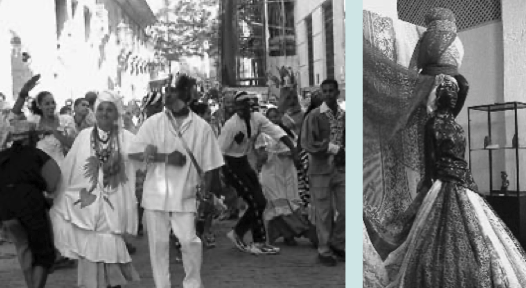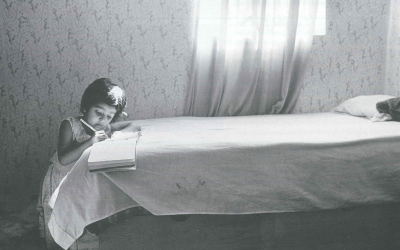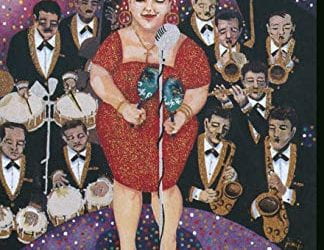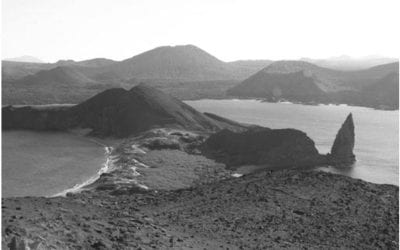Highlights of Cuban Colonial History
On January 6, 2002, el cabildo habanero, hundreds of dancers and musicians reenacted the activities of las comparsas of nineteenth-century Cuba. During the era of Cuban slavery, these wandering groups of costumed musicians, singers, and dancers marched through the five main plazas of Old Havana, eventually stopping in front of el Palacio de los Capitanes Generales (the Palace of the Capitan Generals), the current Museo de la Ciudad in the City of Havana. Since 1986, Casa de Africa has organized this event to commemorate the Día de los Reyes, the one day that African slaves were free to revel in the streets of Old Havana. The renowned Cuban scholar Fernando Ortíz noted:
Of our old Havana carnivals of the nineteenth century, the most expressive were the festivals of the negro slaves: the Day of Kings which has been extinct since 1884 and [las comparsas], which even though they lasted, readjusted to the preferences of the epoch {Ortíz, 1991 #324:208}.
Ortíz noted that during the era of slavery when the Día de los Reyes was the principal carnival of the slaves, la comparsa was an act of wandering theater, a folkloric episode, and a spontaneous group of revelers who took advantage of the carnival or festival celebration.
Ortíz meant that the Cuban comparsa phenomenon was not a “cosa de negros” or a thing of blacks, rather a common expression that whites and people of color manifested, as well. The comparsa was not an culturally exclusive expression, but rather what a Spanish Academy dictionary defined as “a group of persons that in the carnival days or public gatherings go dressed with costumes of the same kind.”
During the celebration of el Día de los Reyes, the African slaves tried to reproduce certain aspects of their native festivals through the dramatic dances and pantomimes. Ortíz argues that as part of the nocturnal processions and street festivals of West Africa and mediaeval Europe, the people also formed unions or organizations to attend great civil and religious festivities, such as the procession of Corpus Christi or el Día del Corpus .
The white and black comparsas did not form racially exclusive groups until after the Spanish authorities outlawed the Día de los Reyes celebration in 1884. Then, the distinct social groups, white, black, and people of color formed separate groups during the carnival season. The whites held their processions down the picturesque Paseo del Prado, while the blacks, mulattos, and Chinese groups kept to the outer walled areas of the city.
It was not surprising, then that Casa de África was an important point of orientation in the heritage landscape of the Historic Center of Havana. The collection of Fernando Ortíz, “the second discoverer of Cuba,” was the centerpiece of the museum’s eclectic collection. Through the object-centered narrative that identified Afrocuban religions as a symbol of Cuban heritage, Casa de África promoted the Cuban State’s shared heritage paradigm to international tourists, as one might have expected. Old Havana’s status as a World Heritage Site was a result of Cuba’s role in globalizing processes of the sixteenth century, particularly the trans- Atlantic Slave Trade. Casa de África was responsible for creating meaningful representations of Cuba’s African presence and promoting its significance for the local residents of Old Havana. The emergence of Havana’s colonial history and Casa de África was inseparable from the work of heritage preservation and socio-cultural projection in the Historic Center of Havana. The Historic Center was an important focal point within the local and national heritage landscapes.
OLD HAVANA BECOMES THE HISTORIC CENTER
The Historic Center refers to the 352.1 acres that comprised the original town of San Cristóbal de la Habana (est. 1519). Havana did not expand rapidly and the island was not the source of mineral riches for the Spanish Crown. Nevertheless, Havana became an important port and rendezvous point between the American colonies and Spain because of its geographic location and natural harbor. This location also made the island an easy target for sea attacks by pirates and privateers. Old Havana was the center of Spanish military and financial activities in the seventeenth century, which also made it vulnerable to external economic, political, and social conditions. Although the city was “fortified like no other in the West Indies,” the English captured San Cristóbal de la Habana in 1762 and remained until 1763. The Spanish erected three fortresses—La Real Fuerza, Los Tres Reyes del Morro, and San Salvador de la Punta—to protect Havana from raids. The Spanish reinforced the defense system, adding more fortresses, watchtowers, and observation posts and in 1763, built a wall around the city to protect it from further pirate attacks.
This history made Old Havana distinct from other Latin American colonial cities in two respects. First, Havana has a unique system of large and small plazas and irregular street plan that create a distinct “cityscape.” The city’s second feature is the system of fortifications, which OHCH literature describes as possibly the “finest and most complex anywhere in Latin America.”
In the nineteenth century, the town spread beyond the wall, new neighborhoods spread west to the adjacent zones to accommodate the burgeoning Creole aristocracy. These “exclusive” districts, such as el Cerro and el Vedado became the new “select” neighborhoods, and their architectural styles departed from the colonial architecture of Old Havana, according to Leal Spengler. The new areas, unlike the old city, had mansions, large boulevards, parks and walkways for leisure activities. The wall came down around the middle of the nineteenth century and over the next century, Old Havana declined as a popular residential area for the wealthy. Inside the city walls, property owners sold the old family homes, converted them into residential complexes, or rented the ground floors as warehouses and workshops related to port activities {Leal Spengler, 1998 #1374:42}. The newer and more affluent areas became concentrated in the west. Old Havana became disadvantaged and later was the site of the aqueduct, the gas lines, and the sewer systems. In the 1990’s, the Office of the Historian restored many of these homes and converted them into casa museos (museum houses), such as Casa de África.
CUBAN CULTURAL POLICY YIELDS WORLD HERITAGE
In 1981, the Cuban State designated funds to the OHCH for the First Restoration of the Historic District (el Primer Restauración del Centro Histórico, hereafter the First Restoration). The OHCH created the Department of Architecture (el Departamento de Arquitectura) and received funding from UNESCO to create the CENCREM (1985), which supported project management, technical work, and investment in the Historic Center and beyond. The Provincial Management of Physical Planning and Architecture, a section of the OHCH, created the General Guidelines for the recovery of the Historic Center. The municipal Section for Architecture and Town Planning outlined the first steps of the municipal “Master Plan”
In 1982, Old Havana became a World Heritage Site, entering the list as the twenty-seventh heritage site. For Suárez, the value of the Centro Histórico increased after it became a World Heritage Site (Patrimonio de la Humanidad). It not only belonged to Cubans and the neighbors of the museums but to all visitors of the Historic Center. The concept of historic value and patrimonio universal meant that everyone had the right to criticize and enjoy these sites.
The third restoration stage began with the first five-year restoration plan of Old Havana (1981 to 1985). In the 1980s, the OHCH also focused on increasing the “popular awareness” of the historic value of Old Havana. Articles appeared in newspapers and magazines and the OHCH started a series of walking tours of the area led by Leal. These tours became so popular that the OHCH moved the lectures to the amphitheatre in Old Havana and eventually turned them into the television program, “Andar la Habana.” In this same phase, Casa de Africa underwent renovation (1984-1985) and opened in 1986, on January 6, the date when the African slaves traditionally celebrated Día de los Reyes.
In the second five-year plan (1986 to 1990), the restorations focused on two squares, Plaza de Armas and Plaza de la Catedrál, as well as several area monuments that were not in the prioritized zone. The OHCH was concerned with revitalizing the cultural and social life of the neighborhood, so they studied the local social life and living conditions, as part of the plan of heritage preservation and rehabilitation. Most of the population of the Historic Center resided in buildings of great historical value. The main concerns were to: 1) resolve adequate housing for the residents of historic buildings and 2) rehabilitate damaged sites of historical value.
ON BECOMING A “SPECIAL MUNICIPALITY” AND THE “HISTORIC CENTER”
Just after the third five-year plan began, the fall of the communist bloc severely affected the Cuban economy. The loss of favorable trade partners sent the Cuban economy into a downward spiral, which drove inflation rates high and created shortages of foodstuffs, primary materials, combustibles, and other important resources. In June of 1993, the state also legalized the holding and use of the US dollar for the many citizens who illegally possessed dollars that they had received from their families abroad or from other sources. The legalization of the US dollar was one of many measures that the State implemented to give relief to different sectors of the society during the crisis.
“We have to work with the social projection of the museum,” Suárez said. As Suárez affirmed, in the OHCH and in Cuba in general, challenges inspired practices and innovation. The OHCH had thirty-seven edifices to maintain, which for Suárez, was a source of pride. “This is something to be proud of,” she said. “Although it isn’t easy.” In Cuba, the Historic Center is a special case because in other countries, corporations have to assume this responsibility. In Cuba, the state assumed this responsibility and the work done with respect to museums “motivates admiration.” “We are making history,” Suárez said accentuating each syllable with the nod of her head.
Fall 2004/Winter 2005, Volume III, Number 1
Michelle Tisdel Flikke, born in 1971 in Texas, is a doctoral candidate in the Department of Social Anthropology at Harvard University. Her research interests include the interface of politics, culture, and identity, museums and heritage production, and diaspora identities. A footnoted version of this article can be found at http://drclas.fas.harvard. edu/publications.
Related Articles
Editor’s Letter: Flora and Fauna
Ellen Schneider’s description of Sandinista leader Daniel Ortega in her provocative article on Nicaraguan democracy sent me scurrying to my oversized scrapbooks of newspaper articles. I wanted to show her that rather than being perceived as a caudillo
Bilingual Aesthetics: A New Sentimental Education
After an exhausting game of soccer with a crew of Mexico City street children, Vicente, a young teenager of 13 said, “Vamonos a la verga.” It was my third day with Casa Alianza, the international…
Nature and Citizenship
Two first-time visitors to the Galapagos archipelago begin their experience in exactly the same way. Two hours after departing mainland Ecuador, their plane descends towards the island of…





